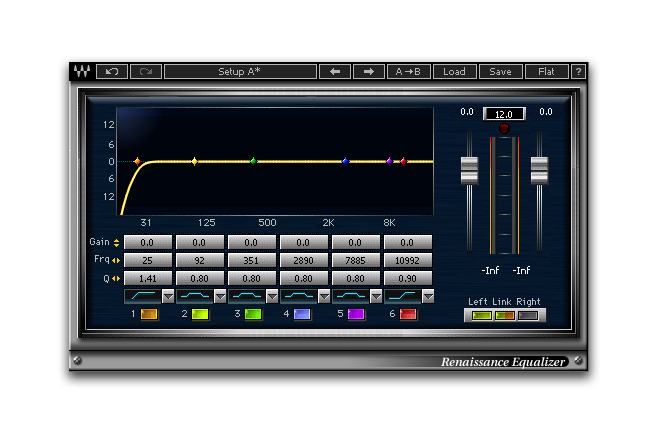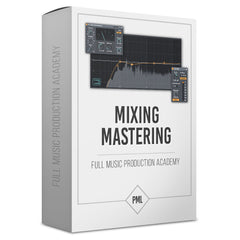
How do you EQ your kick and bass for powerful low-end? It’s a very good question because it's not easy making two sounds in the same frequency range fit together. And not only that, the kick and bass must also complement each other.
Luckily, there are ways you can EQ your kick and bass to make them shine and pop through in your mix. And by amplifying “the good stuff” while slightly reducing frequencies in the other, you can make your kick and bass sound magnificent.
Let’s explore the three tips on how to EQ your kick and bass for powerful low-end.
1. Remove The Lowest Frequencies

Human hearing is, in most circumstances, limited from 20 to 20,000 Hz. For lower 'bassy' frequencies, this limitation means that we can’t hear or perceive frequencies under 20Hz.
It’s also important to remember that frequencies are cycles of vibration. Higher frequencies cycle faster while lower frequencies cycle slower.
Ultra-low frequencies are super slow sine waves that do no good other than eating up valuable headroom in your mix. Their cycle is also too slow to even perceive the sensations of good bass. It's just an ominous rumble.
That’s why an important part in equalizing kick and bass is removing the unnecessary sub 20Hz frequencies to get a tighter low-end and a kick and bass you can boost in the frequencies that matter.
How To Do It
Use a simple linear phase EQ like Ableton Live’s “EQ Eight” and apply a high-pass filter. If you mix in an untreated (or poorly treated) room, you want to use a good pair of studio or reference headphones to make the right mixing decisions.
Apply a high pass filter and remove the frequencies below 20Hz. If you want to go a little bit higher, that’s fine too. But don’t go overboard – low frequencies are tremendously important for powerful low-end.
2. Let Your Kick And Bass Shine

Now it’s time to find the special frequencies of your kick and bass. And by special, we mean the most pronounced low frequencies of the two sounds.
We need to find these frequencies to know what changes we need to make with an EQ to allow our kick and bass to shine.
And while we can throw a frequency analyzer onto our sounds and call it a day, we need to think a step ahead.
Sometimes, we can choose the wrong kind of kick for our bass, or vice versa. And most importantly, the sounds can be in the wrong key, which makes them clash.
Therefore, you must ensure that:
- Your kick is in tune with your bass
- Your bass hits the right frequencies
If the low-end in your kick is in the key 'A,' but your bass is in 'D#,' they will clash because the frequencies won’t match or complement each other in the right way.
And if your bassline is too bright, which could mean you need to go down an octave, the frequencies will be too high.
How To Do It
With your kick and bass in place, get a spectrum analyzer on both your channels. Take note of which main frequencies the sounds targets.
For example, your kick might have a peak in 65Hz, while your bass is strongest in the 80Hz range.
With this knowledge, you can cut a little bit in the specific frequency ranges so that both instruments shine through.
In our example, this can mean cutting a tiny bit in the 65Hz range of your bass to let your kick breathe. It can also mean cutting your kick in the 80Hz range to give room to your bass.
The goal is giving both your kick and bass space to shine – while working together in the best way possible.
3. Give The Good Stuff A Boost

With the unnecessary ultra-low frequencies removed and the specific frequencies cut in your kick and bass, so they shine, now it’s time to give the good stuff a boost.
A lot of interesting things happen in both kicks and bass. Your kick has a higher frequency click, a boxy mid part, and a thump around the 100Hz range – to mention a few.
The bass has the ultra-lows, tonal bass frequencies around 100Hz, mid-range growl, and sometimes a crispy high-end.
How To Do It
Your goal is to identify and locate the good stuff in both your kick and bass and give them a boost. This process means finding the frequencies you want to highlight and bring to the forefront of your mix.
But remember our second tip about making our kick and bass breathe? The same technique is required when boosting things in your low-end. Your goal needs to be – if you boost one frequency range, reduce the other slightly.
The goal here is to make ‘slight’ adjustments. If you completely cut the 65Hz from your bass, it will most likely sound thin and weird. A little bit goes a long way when mixing kick and bass.
Want To Learn The Complete Process To Mixing And Mastering Your Tracks?

Mixing and mastering is a true skill that takes years of intense focus, training, and hard work. Knowing what decisions to take to bring out the best in each sound while making all sounds work together is tricky. You want to give your music that sweet signature sound and style to stand out.
But what if you could learn the exact process of what to do in different situations to achieve your desired mixing and mastering results?
Mixing and Mastering Bundle, containing five complete courses with life-time access, shows you precisely what to do.
In the complete, online courses, which includes:
- Mixing And Mastering A Melodic Techno Track (masterclass)
- How To Mix A Track With The Best Plugins Available
- Mixing A Track From Start To Finish (using stock plugins)
- Mastering From Start To Finish
Plus a complete masterclass for mixing and mastering future bass…
You will learn the complete process to mix and master your tracks, making your sounds powerful and loud, like the radio tracks. You will also learn how to give your tracks their signature sound while keeping balance and finesse to make them sound as good as they can.
Learn The Complete Mixing And Mastering Process
And with a complete walkthrough of the most-used mixing and mastering tools and effects, like compressors, equalizers, multiband, and limiters, you will have invaluable knowledge, serving you well for the rest of your music career.
Mixing And Mastering Bundle

Thanks for reading, and see you in the next article.
 Pelle Sundin is a Swedish music producer and writer, active with his chillout project PLMTRZ. He also produces psytrance. When he's not producing, he surfs, skates, and chugs coffee. |